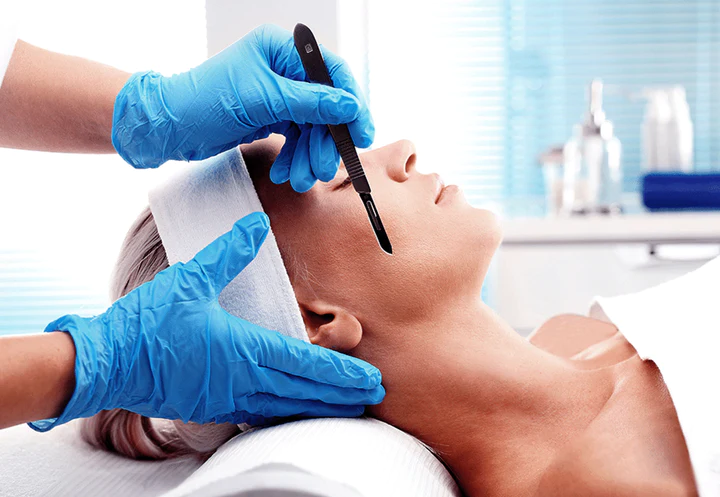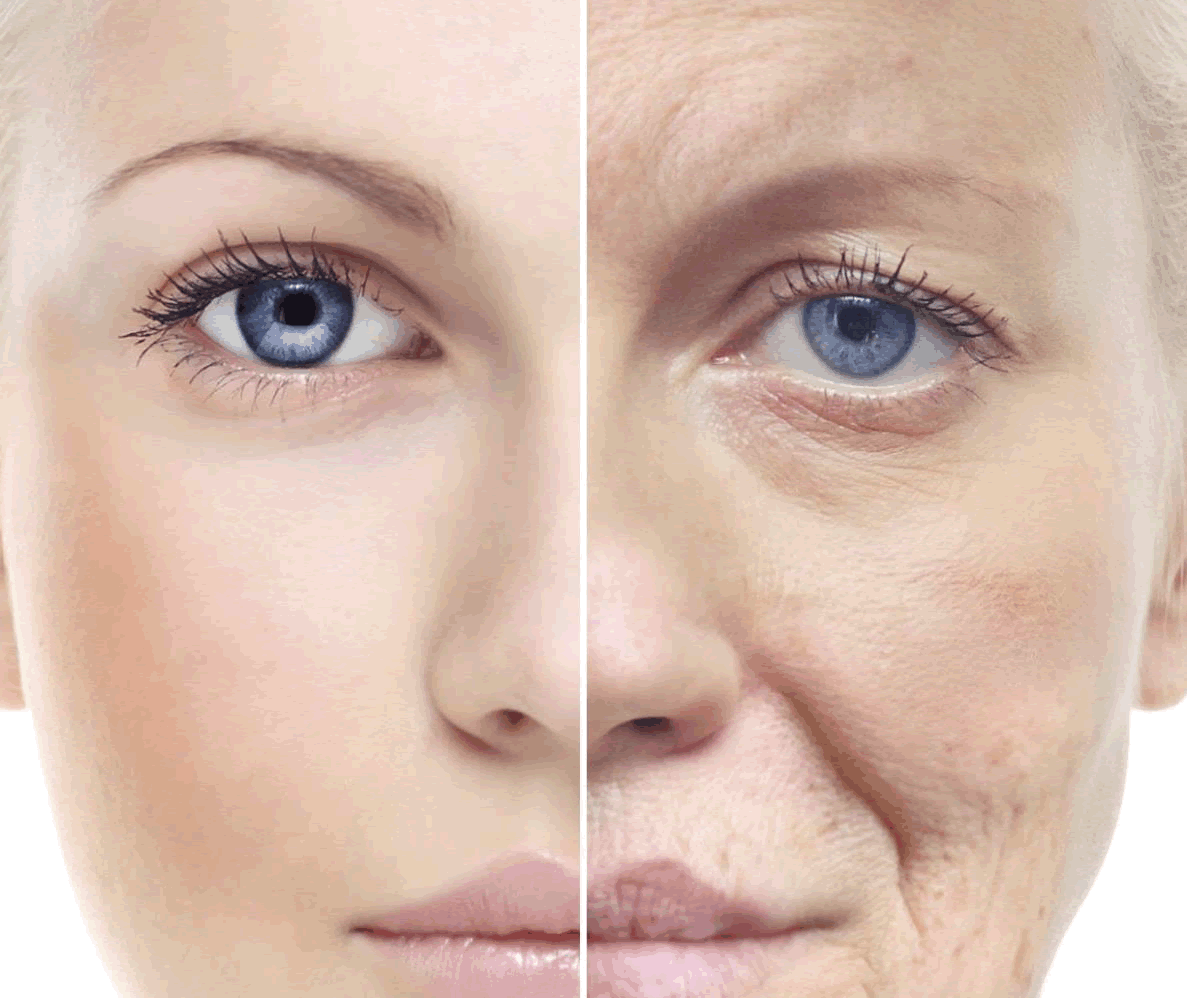Dermaplaning

What is dermaplaning?
- Scraping away dead skin cells with a surgical blade.
- The procedure involves using a small, modified surgical blade to gently scrape the surface of the epidermis with light, feathery strokes, leaving the skin smooth and vibrant.
- The most effective way to exfoliate the skin, even though it has been used for a very long time the use of social media has increased it’s profile.
Possible contraindications
- Nickel allergy
- Active acne
- Active herpes simplex virus/ infection
- Flat warts
- Raised lesions
- Radiation
- Moles
- Rosacea
- Sclerodema
- Skin cancer
- Sunburn
- Telangiectasia/erythema may be worsened or brought out by exfoliation
- Thick, dark facial hair
- Uncontrolled diabetes
- Use of Accutane within the last year
- Vascular lesions
Benefits
- It is shaving away dead skin and vellus hair or peach fuzz, the benefits of removing it are;
- A more radiant appearance
- Increased absorption of topical products
- The reduction of fine lines
- Priming skin for chemical peel
- Helps with dry flaky skin
It can not grow back like a beard
- Your hair will grow back exactly the same color and thickness as it was previously. You cannot change the structure of your hair follicle by simply shaving your hair off.
- After the hair grows back, it seems like it is darker, but that is not the case.
- After dermaplaning, because you are removing the dead layer of skinandvellus hair, skin will appear much brighter than experienced in the past, and then after the regrowth, it seems darker.
How long do the effects last? When will I need to have it done again?
- Skin cell turn over occurs from 14 days onwards.
- As we age our skin loses the ability to shed skin effectively leaving build up, even the best scrub wontbe as effective as a dermaplaning treatment.
- You can have repeat treatments from 3-4 weeks.
- It is safe to use in pregnancy.
- There is no downtime, skin may appear slightly red for a few hours, but make up can be applied straight away.
- The only skin that probably should not be treated with dermaplaning is acne-prone skin. The oil from the sebaceous glands needs to travel up and connect with the vellus hair in order for it to be excreted. If the hair is removed and the oil builds up, the glands are obstructed and cause more breakouts.
Aftercare advice
- Avoid AHA’s or vit A and exfoliation for 24-48 hours
- Use moisturizer with an SPF 30+ for 2 weeks
- Avoid direct sun exposure for a few days
- Avoid excessive heat the day of procedure
- Avoid facial waxing 7 days post
- Avoid botox / dermal fillers 2 weeks post
Ageing

- A loss of hyaluronic acid content.
- Slower cell turnover and reduction in sebum production on the skin’s surface makes roughness and dryness more likely.
- As the epidermis layer of the skin agesit becomes more sensitive to thesun’s rays. (USE SPF!)
- The top "dead" layer is called thestratum corneum. Eventually, the dead cells break away from the epidermis and fall off, making room for newer cells growing up from below. It takes roughly one month for new cells to get all the way to the top layer, meaning the skin you have a month from today will be completely new compared to the skin you have now.
- As we age the skin is less efficient at healing itself, and less efficient in shedding.
Aesthetics
- Healthy skin is a sign of overall health and can contribute to better mental and emotional well-being.
- The skin plays a significant role in our perception of facial beauty, with skin texture signifying youth and vitality. When healthy, its layers work hard to protect us, but when compromised, its ability to work as an effective barrier is impaired. We have therefore found the best ways to improve skin health to support it in maintaining its protective role.
Indications
- Dermaplaning encourages the normal shedding (desquamation) of the stratum corneum and the removal of dead keratinised cells from the epidermis (top layer) of the skin.
- Dermaplaning minimises the appearance of fine lines and superficial scars.
- Dermaplaning increases the skin's ability to absorb topical products and high performancecosmeceuticalswhich have been developedto target specific skincare issues.
- A dermaplaning treatment actively stimulates circulation, increasing the delivery of oxygen to the cells.
- Dermaplaning primes the skin for other medi-aesthetics modalities such as chemical peels, micro needling, mesotherapy and LED light mask therapy. (LED Information here)
- Dermaplaning removes fine 'vellus' hairs from the face and creates an even surface free from sebum and excess keratin.
"Please click here to book your Dermaplaning Service"